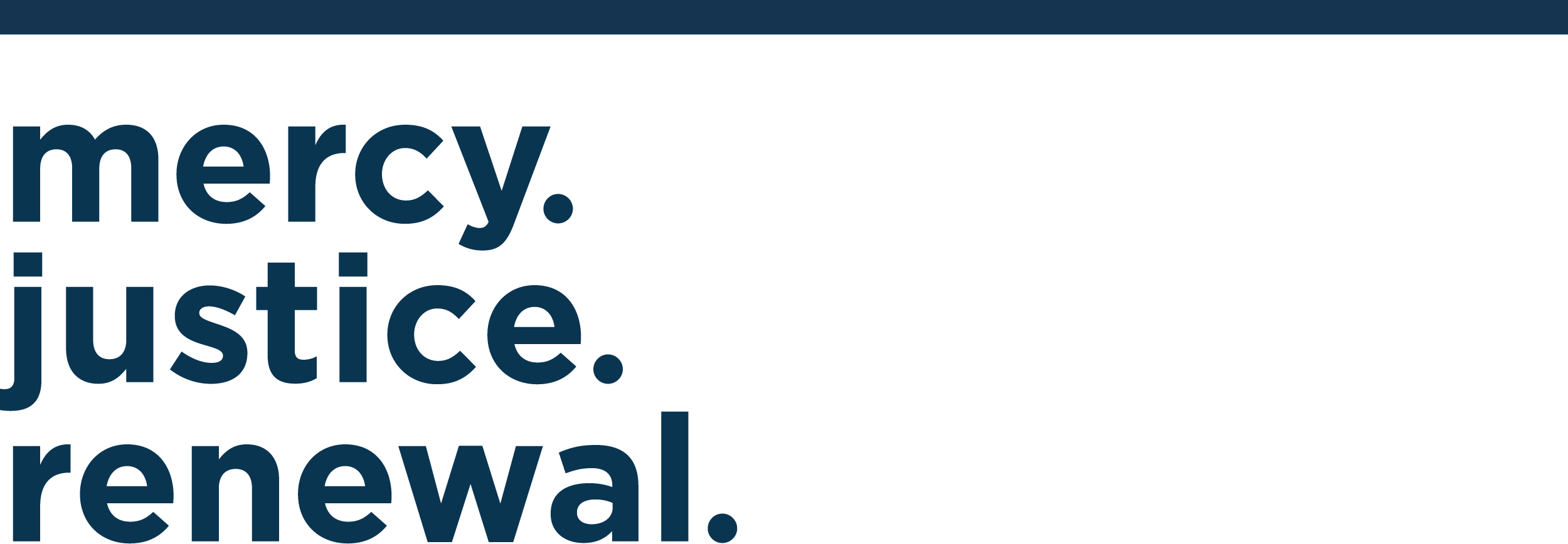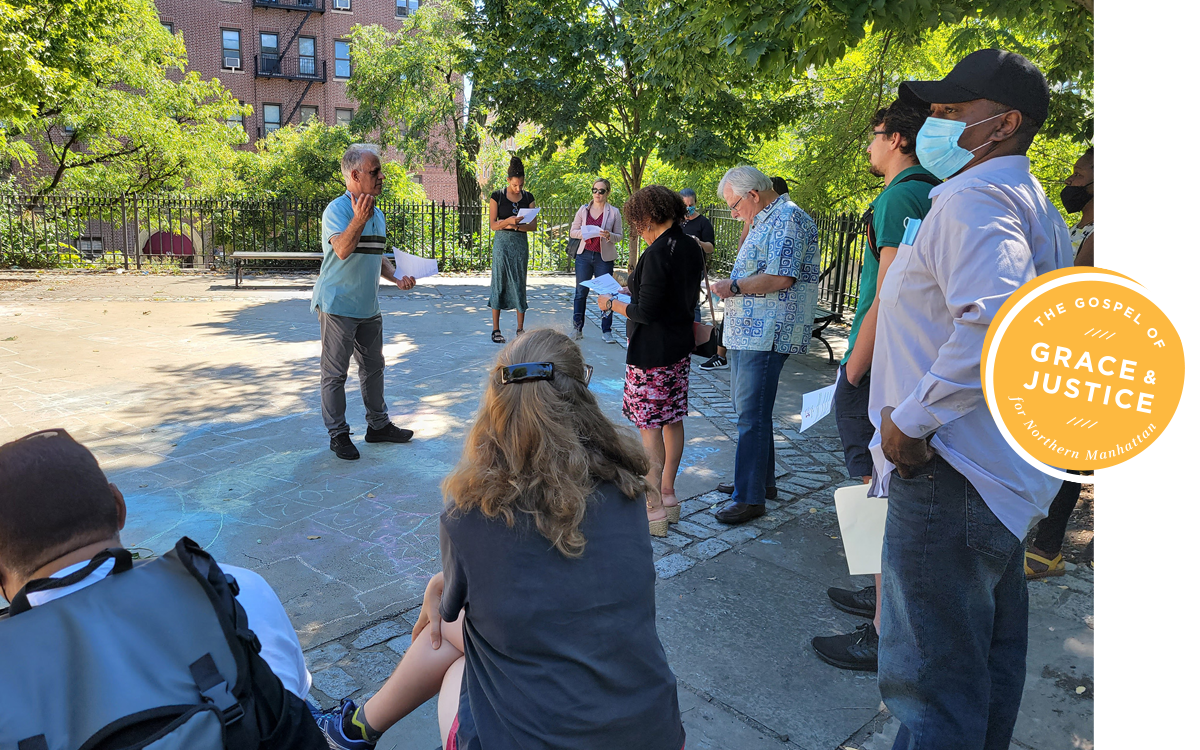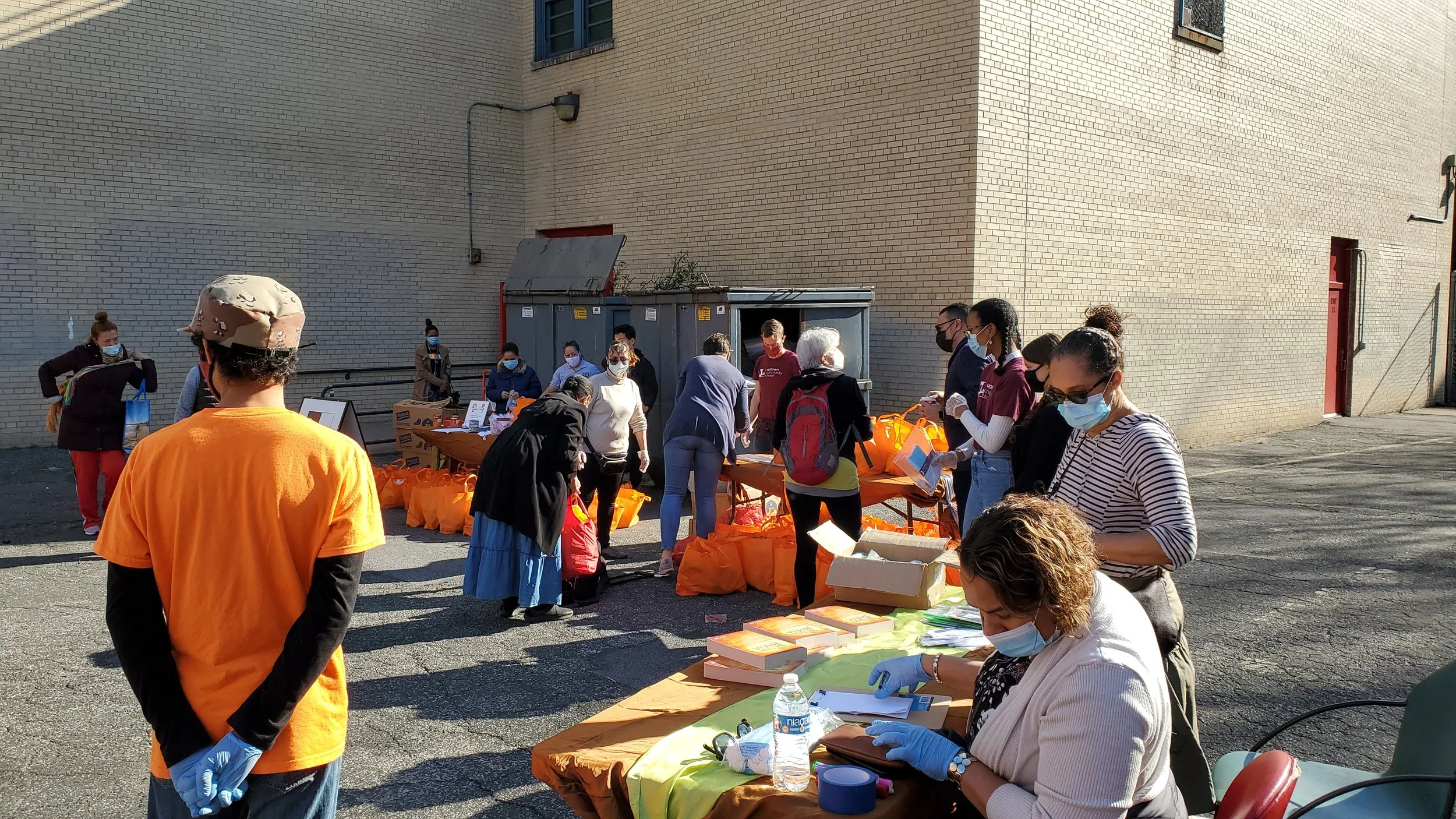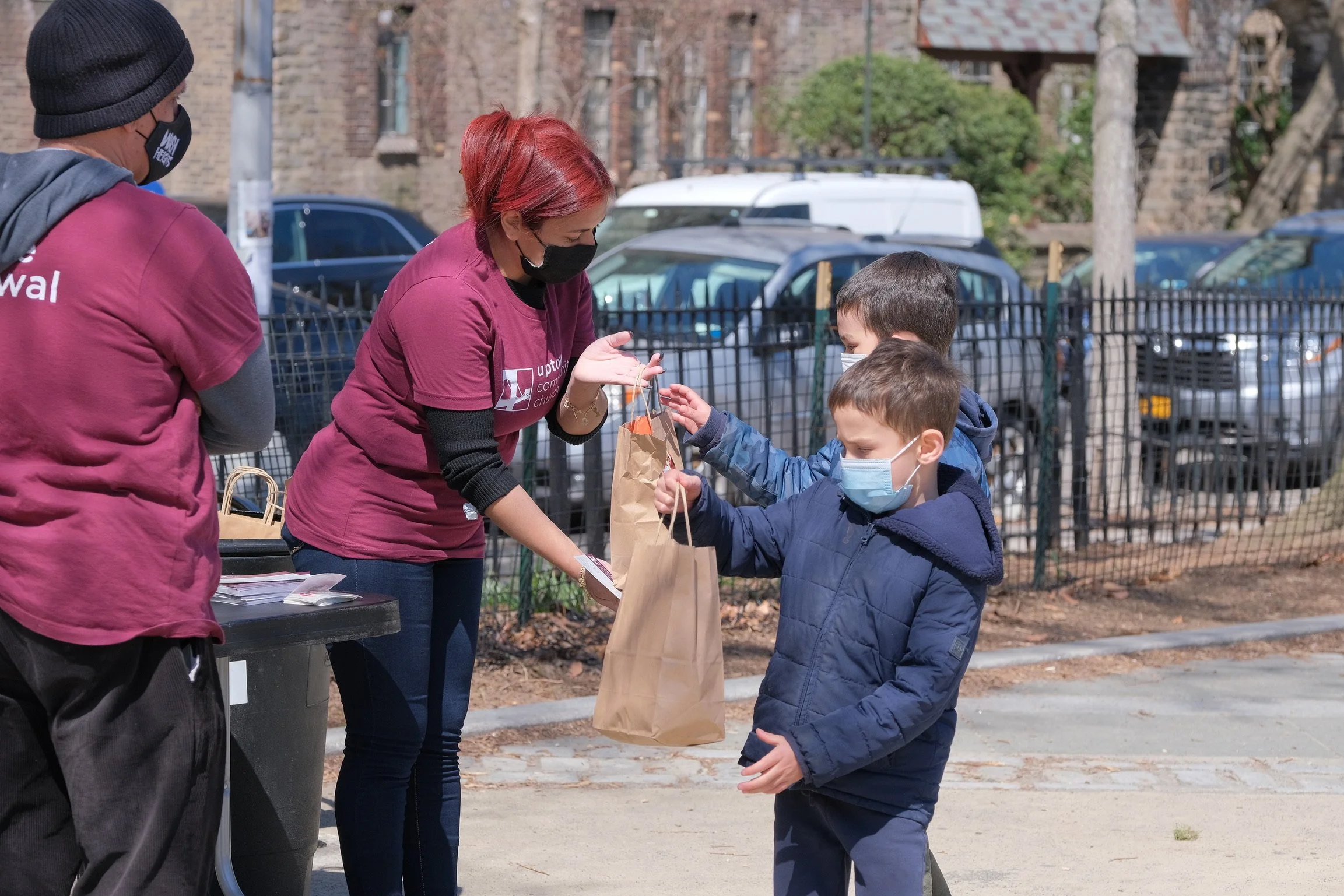Uptown's Neighborhood Renewal & Diaconate Newsletter | Winter 2021
Al Santino, Deacon and Neighborhood Renewal Coordinator, leads a Neighborhood Renewal meeting in Bennett Park. (Photo Credit: George Sarkissian)
Renewing the Heights
By Douglas De Jesus
"Bueno. It's a story of a block that was disappearing," says Usnavi de la Vega to a group of wide-eyed children at the beginning of the movie musical, In the Heights. Focused on a group of Washington Heights residents, the musical continues with song and dance through trial, tribulation and (spoiler alert) an inevitable happy ending. Used throughout the film as a backdrop is the George Washington Bridge (GWB). The architectural marvel is the scene-stealer that works overtime to give a beautiful face to the neighborhood. Yet, if you happen to walk through the Heights, the comparison between the cinematic world and reality is stark. Yes, there is music and the occasional dance; still, the colorful and pristine sidewalks of Hollywood sets directly contrast the unkempt and often dirty real-life locales the movie depicts.
Despite the global attention the neighborhood has recently received due to the musical, Washington Heights vibrancy and vitality have come into question. The population is shrinking, and if you look at the stark numbers post-Covid, the tale they tell is one of woe.
According to the New York City Decennial Census Data, from 2010 to 2020, the population of Washington Heights decreased by more than 5%. Only one other district in Manhattan experienced a decrease and it was at a loss of only a tenth of 1%. Over 15% of the Heights residents live below the poverty line which is approximately 20% higher than the rate in New York State and 25% higher than in all of the US. The median household income was $54,420, about 23% less than the citywide median household income of $70,590. And according to nyc.gov, the neighborhood suffered more deaths from covid than others in the borough. The need for relief is overwhelming.
However, some within the community believe they are their neighbor's keeper and decided to pitch in.
Among those who have volunteered are members of Uptown Community Church. Uptown is a Presbyterian church that features a dynamic congregation. Located in the Heights, the church meets in a synagogue for Sunday worship services. The church may arguably be among the most reflective of New York City's landscape of people. The congregation is multi-ethnic, multi-cultural, multi-racial, poly-linguistic and economically diverse. And it's armed with the belief that the gospel of Jesus is a revolution through which all who are broken are reconciled and remade by the grace of Christ. At its helm is lead pastor Reyn Cabinte.
Cabinte seems to be a cultural anomaly. He was born in Hawaii, into a Japanese/Filipino family and raised in California. Coming to NYC for collegiate and seminary studies, he chose the Heights to plant roots and start a family and profession. Convinced that being pastoral meant taking care of his community, he launched a faith-based program of service called Neighborhood Renewal.
Neighborhood Renewal (or just Renewal as church members refer to it) he says, "Exists to help bring God's healing and justice to [their] community through tangible acts of service, working for the common good through partnerships with others who love [their] neighborhood." When asked what the Renewal program means to him, he answered, "Renewal is our word for the expression of the part of the [Christian] gospel that says when Jesus died on the cross, rose from the dead and the power of resurrection came into the world and has its effect, he reconciled all things whether and heaven or on Earth to himself." He added, "The end of the gospel story is a new heavens and new Earth in which everything is brought under his kingship is made beautiful, sadness has gone away and injustice is made just. People who are far away and marginalized are brought into center [focus.] We're brought into that story through Christ's death and resurrection for our sins that he paid for. That's the only way we can be part of that story. And now that we are part of that story, we join him in the renewal of absolutely everything." And the church has recruited other churches and area service programs to make this vision concrete.
“Renewal exists to help bring God's healing and justice to [the] community through tangible acts of service, working for the common good through partnerships with others who love [the] neighborhood.”
A simple rubric is employed to help determine the program's efficacy and keep its members firmly rooted in the core mission of the church's renewal efforts (and it's based on answers to the following questions): are members active in the community on an ongoing basis? Are they working on behalf of community interests and causes? And most critically—are they learning from the community while working with local organizers, activists and residents?
A recent encounter with a resident exemplifies Renewal's grassroots mobilization on behalf of neighborhood causes. During an outreach effort, the group was in a park distributing snacks to children. One of the members started a dialogue with one of the mothers present. The woman revealed that she was the mother of two young children and experiencing a challenging home situation with domestic abuse. She had exhausted all avenues of help. Members of the Renewal program quickly stepped in to provide warm jackets for her kids and helped her register them to a nearby school. They are currently helping her navigate the legal system as she seeks protection from her abusive partner. Reyn said, "It's to show her the message and be with her materially so that she finds the world a more just place [where] she finds her needs met. Because Jesus is in her life through the community which is bearing this renewal into her life."
Tasked with its operations is the Neighborhood Renewal Coordinator Al Santino. He is the "neighborhood" guy—the mayor. You'll often find him in the community talking to various people, asking how they and their families are and if they need some aid. His job is to not only organize relief to the afflicted with material resources but to be a kind of a "GWB" that brings locals together through justice and love.
Volunteers from Uptown distributing bags of food (above) and socially distant Easter bags for kids and families in the neighborhood (below).
An ongoing Renewal project, the Fairview Avenue Lot Clean Up Program, embodies the vision of Uptown's Renewal efforts. Spurred on by the blight of the vacant lot across the street from her building, a church member began a grassroots movement to clean the decay. She eventually hit a wall with her attempts and turned to Santino and the Renewal group. The collective heeded the call and provided the additional workforce to help with the efforts. And when the fight escalated involving the property owners and developers, Santino enlisted the aid of New York state senator Robert Jackson.
Finally, a third initiative organized was in the wake of George Floyd's murder. It consisted of meetings aimed at bringing opposing groups to the table to resolve long-standing issues in the community — specifically, issues between neighborhood youths and officials from the local police precinct. At one of these meetings, the police officials asked the teen participants what changes they would like in neighborhood policing. A young woman of color seized the opportunity to speak about the cops stationed at local high schools who remained in their squad cars without stepping foot out of them as part of their standard practice. She explained that those actions prompted a feeling of being surveilled under the watchful eye of "big brother." She continued to express that it made her feel like the cops were waiting for the students to step out of line only to pounce on them. A high-level officer countered, asking if they had an alternative. She quickly answered that cops needed to get out of their cars and talk to the students. They needed to introduce themselves and ask students their names. They needed to acknowledge them and reaffirm that they were there for the student's safety and had their backs. The officer agreed and stated that creating bonds was a far more effective way of community policing. He followed up, saying that officers would be out of their cars engaging with the teens from that point on.
Renewal isn't one-sided, with one party giving and the other just receiving. Renewal is a partnership built on listening to the community, involving them and making new connections for the wellness of all.
The beauty of all these actions Santino said was that they started organically. These strategies originated from the myriad relationships that Renewal leaders built in the community through everyday outreach efforts. And when the need arose, they turned to the community to help them resolve their issues.
Renewal isn't one-sided, with one party giving and the other just receiving. Renewal is a partnership built on listening to the community, involving them and making new connections for the wellness of all. Usnavi would be hard-pressed not to sing about this Heights movement that is "Bueno" indeed.
Volunteers helping at the Fairview Avenue Lot Clean Up Program.






